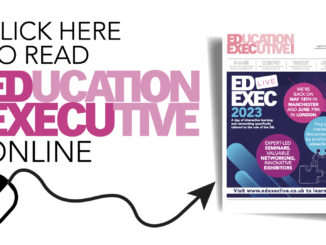
Laura Williams, LJ Business Consultancy Ltd, discusses why having strict boundaries in place is imperative for the busy SBL
If you’ve read my blog, or attended my confidence-building SBL support session in August, then what I’m going to say next will be familiar to you – but I want to remind you of it! If you haven’t, and/or didn’t, then what I’m about to share with you is the best piece of advice I can give you right now.
Interruptions are a necessary evil in the life of a school business leader, but there is a way that you can deal with them that will help you to be more efficient and set some very important boundaries.
After giving up on a ‘Do not disturb’ sign – which I found to be rarely effective or, in some cases, too effective! – I implemented an ‘interruption management system’ that I have since labelled the ‘triage system’. When someone comes into your office, or approaches you to ask for ‘a favour’, or they start their sentence with ‘Can you just’ this is how I advise you to proceed…
- Establish a set of actions that you can designate to every possible interruption.
- Decide what you will deal with immediately (the true, fire-fighting moments that just can’t wait), what you will make note of to pick up at the next opportunity, and what can wait a little longer.
- When someone comes in to see you, get to the point as quickly as you can so you can ‘triage’ appropriately. If the tasks can wait, ask them to come back later, or tell them you will go and find them, or ask them to send you an e-mail, or direct them to another member of staff. When someone comes in, get to the point as quickly as you can so you can ‘triage’ appropriately.
- Don’t let them hover in the doorway – or worse, park themselves in your office giving you the full spiel of what they’ve done, where they’ve been and what they’ve tried already! By hearing them out, but firmly guiding them to the point, everyone feels heard, you’re available to deal with anything critical and anything non-urgent can be redirected as appropriate.
Making people take ownership of non-urgent issues can be powerful, over time, as you’re training them to solve their own problems. It’s also helpful if you need to break the same habit that I suffered from for longer than I care to remember; taking everything on and saying ‘Yes’ to things on the bounce!
Ultimately, if you’re polite yet direct, and consistently apply this method, it trains people to be more respectful of your time as well as helping keep you sane!
Here are some useful phrases to get you started: - “Of course, I’ll look at this in more detail and let you know when I can get this done by.”
- “I’m working on something else at the moment but I’ll ask one of my team to look at this and get back to you if I/they need more information.”
- Depending on who is asking, and what the task is, you might say, “What would you like me to do first?” or, “I’ll check this out with the head and see how they would like me to deal with this.”
- “I can see why you’ve asked me about this but it’s actually someone else’s remit. I’ll pass it on/you should pass it on.”
- “I have a number of deadlines that I’m working to right now and, if you leave this with me, it just won’t get done in the time you’ve specified. If it can wait, that’s great. If not, it might be quicker to do this yourself/ask someone else.”
- “From what you’ve said, I’m not clear exactly what’s involved – can you please explain it to me in more detail so I can prioritise accordingly?” [This is particularly useful for the drive-by – the person that mumbles something unintelligible, drops a file on your desk like a bomb and then hotfoots it out of the room.]
Remember, your time is valuable, you’re valuable and you’ve got more than enough to do without taking on everyone else’s to-do lists too!



Be the first to comment